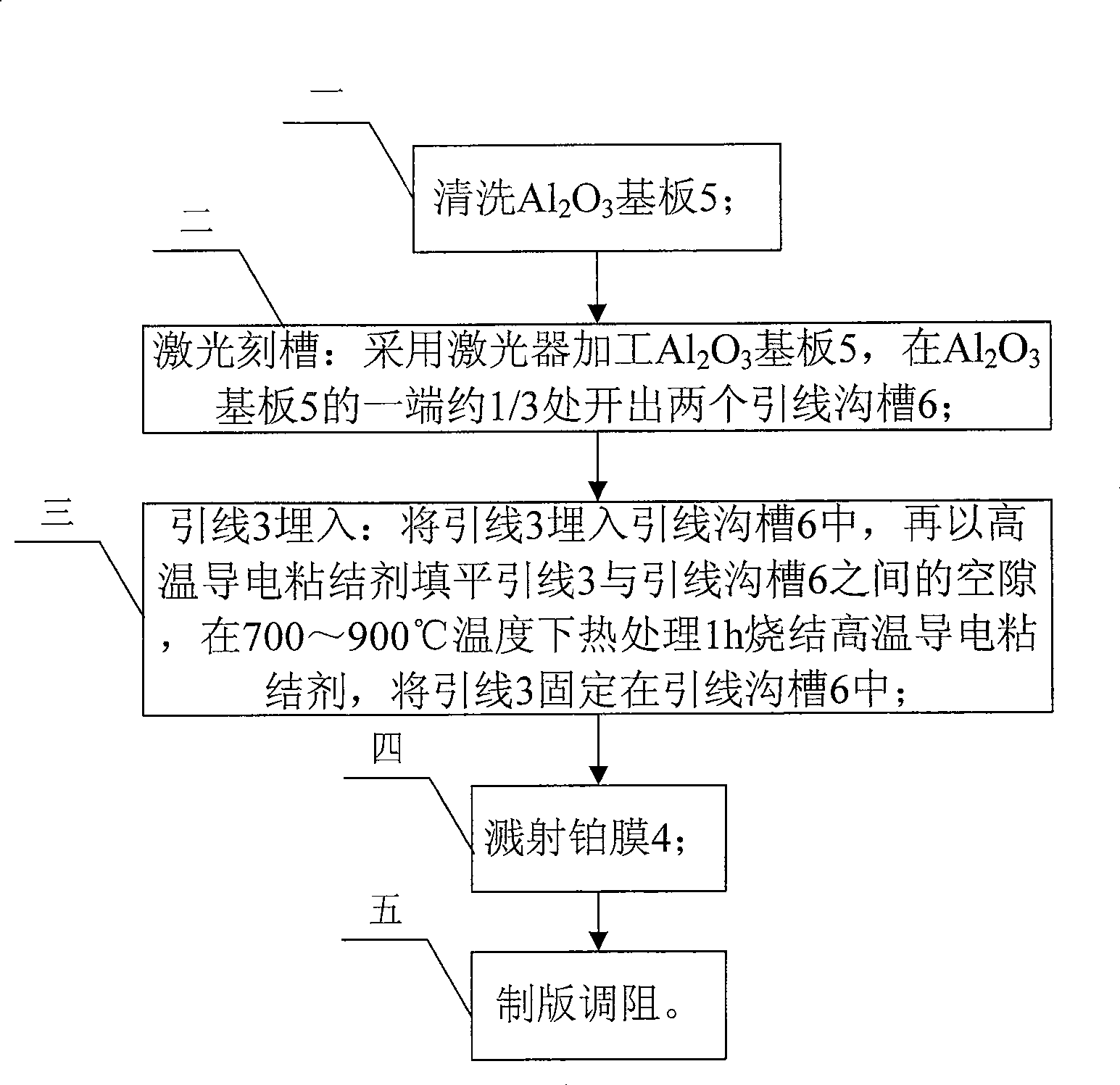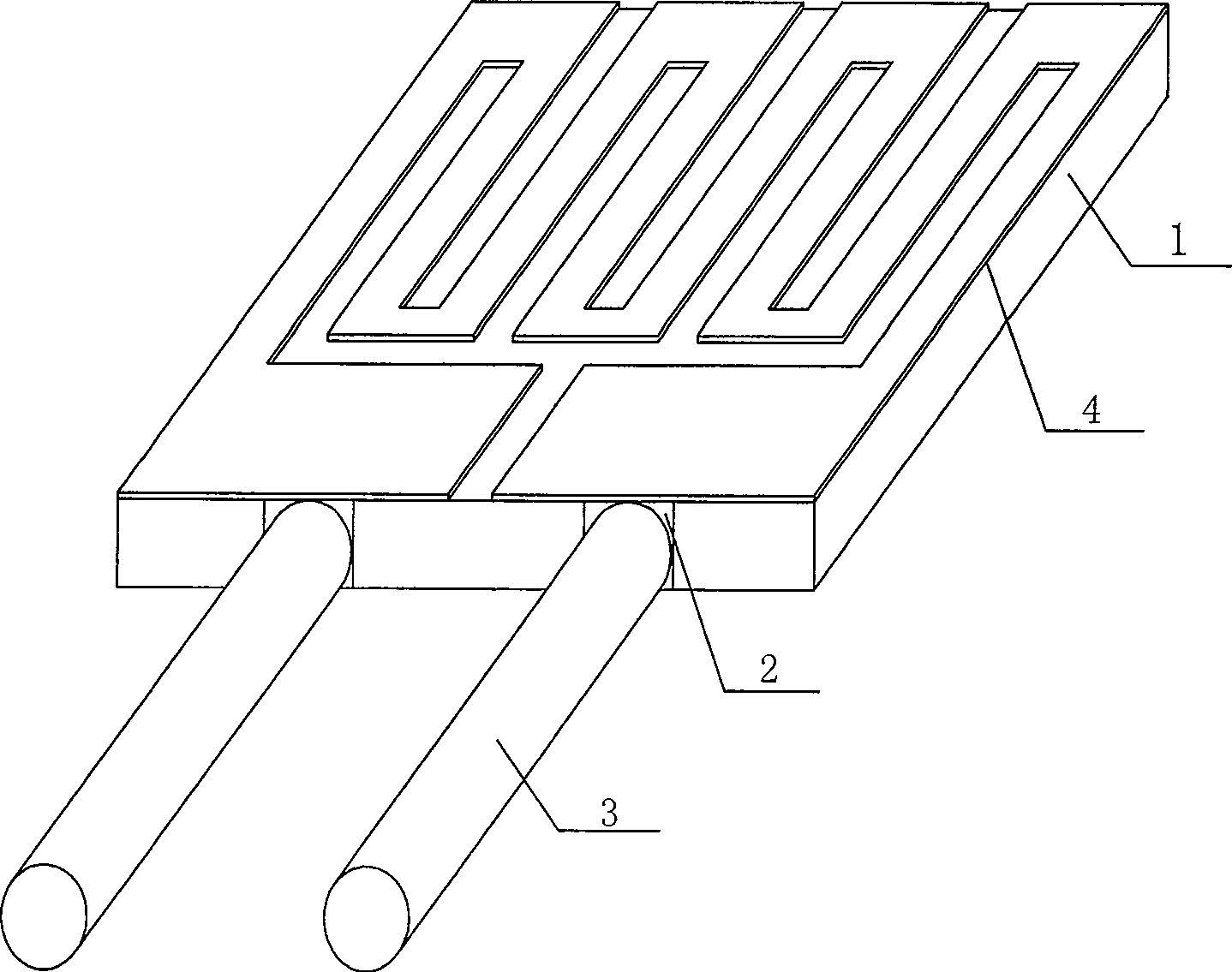Inserting electrode lead-out method for micro platinum thermal resistance temperature sensor
A technology of temperature sensor and platinum thermal resistance, applied in the direction of resistors, non-adjustable metal resistors, resistors with lead-out terminals, etc., can solve the problems that cannot meet the requirements of ultra-thin body, and achieve strong operability and simple process Effect
- Summary
- Abstract
- Description
- Claims
- Application Information
AI Technical Summary
Problems solved by technology
Method used
Image
Examples
specific Embodiment approach 1
[0013] Specific implementation mode one: combine figure 1 and figure 2 Describe this embodiment, the steps of this embodiment are as follows:
[0014] Step 1: Clean Al 2 o 3 Substrate 1;
[0015] Step 2: Laser grooving: use laser to process Al 2 o 3 Substrate 1, in Al 2 o 3 Two electrode grooves 2 are opened at about 1 / 3 of one end of the substrate 1;
[0016] Step 3: Embedding of electrode 3: Embedding electrode 3 in electrode groove 2, filling the gap between electrode 3 and electrode groove 2 with high-temperature conductive adhesive, heat treatment at 700-900°C for 1 hour and sintering A high-temperature conductive adhesive to fix the electrode 3 in the electrode groove 2;
[0017] Step 4: sputtering platinum film 4;
[0018] Step 5: Plate making and resistance adjustment.
specific Embodiment approach 2
[0019] Specific embodiment 2: The difference between this embodiment and specific embodiment 1 is that the high-temperature conductive adhesive is a mixture of glass frit and platinum paste in a ratio of 1:5 to 1:10; other compositions and connection methods are the same as the specific embodiment One is the same.
specific Embodiment approach 3
[0020] Specific implementation mode three: combination image 3 Describe this embodiment, the difference between this embodiment and the specific embodiment is that the overall thickness of the embedded electrode miniature platinum thermal resistance temperature sensor is 0.15-0.65 mm, which reduces the overall thickness of the sensor and meets the ultra-thin requirement; other components The connection method is the same as that in the first embodiment.
PUM
| Property | Measurement | Unit |
|---|---|---|
| thickness | aaaaa | aaaaa |
| thickness | aaaaa | aaaaa |
Abstract
Description
Claims
Application Information
 Login to View More
Login to View More - R&D
- Intellectual Property
- Life Sciences
- Materials
- Tech Scout
- Unparalleled Data Quality
- Higher Quality Content
- 60% Fewer Hallucinations
Browse by: Latest US Patents, China's latest patents, Technical Efficacy Thesaurus, Application Domain, Technology Topic, Popular Technical Reports.
© 2025 PatSnap. All rights reserved.Legal|Privacy policy|Modern Slavery Act Transparency Statement|Sitemap|About US| Contact US: help@patsnap.com



